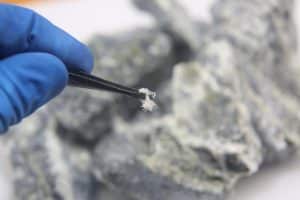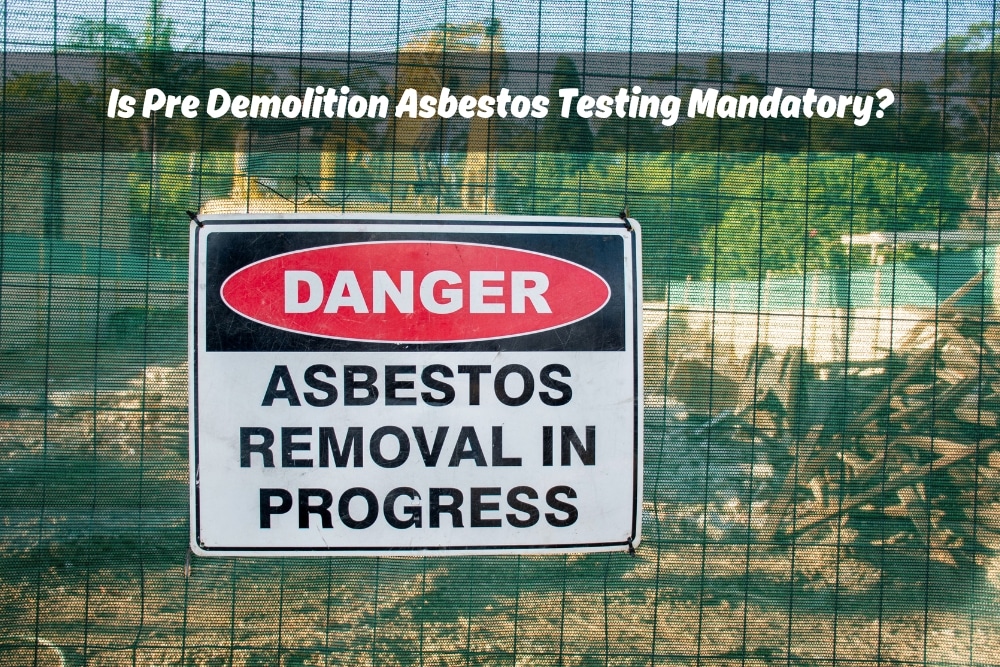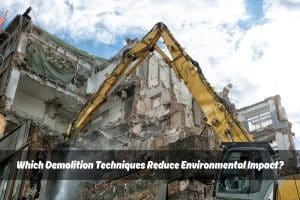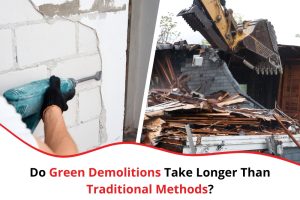So you’re knocking down a building to make way for something new – exciting times! But hold your horses (or wrecking balls) for a sec. Before the big swing, there’s a crucial safety check to tick off: pre demolition asbestos testing. This hidden nasties lurks in older buildings, and if you don’t deal with it right, things can get messy (and potentially dangerous) during demolition.
Can asbestos be hidden in building materials?
Remember that stuff they used in buildings ages ago, that fireproof and insulating miracle material? Asbestos. Turns out, it’s not so miraculous for your lungs if you breathe in the fibres. The tricky part? Asbestos can be hiding in all sorts of unsuspected places, like:
- Roof sheeting and wall cladding – not exactly what you’d call obvious
- Ceilings and linings – sneaky blighter!
- Floor tiles and even the glue holding them down – watch out underfoot!
- Insulation around pipes – nasty surprise if you start tinkering
See the thing is, asbestos is a sneaky blighter. You can’t just eyeball a building and know for sure if it’s lurking around. That’s why asbestos testing is your best mate before any demo project – it helps you avoid any nasty surprises!
Is asbestos testing required prior to every demolition?
In Newcastle, asbestos testing is pretty much a must-do for most demolition jobs. It’s all about keeping everyone safe, and the rules are laid out in those work health and safety (WHS) things. Here’s a quick rundown of when you usually need to get a test:
- Bringing down anything built before the end of 2003 – that’s when they mostly stopped using asbestos.
- Demolition jobs that involve a decent amount of certain building materials (the exact amount depends on where you are).
- Reworking an older building where you might mess with that asbestos stuff
No worries, these are just the basics. To really nail down if testing is needed for your demo project, the best bet is to have a quick chat with a qualified asbestos assessor. They’ll spill the beans on whether you actually need testing.
What happens if asbestos is found during pre-demolition testing?
If the asbestos test comes back positive, don’t despair! Here’s what typically happens next:

- A licenced asbestos removalist will whip up a plan to safely get rid of those ACMs before any demolition can happen. Think of it as an eviction notice for the asbestos.
- These removalists are the pros – they’ll suit up in special gear, seal off the area, and carefully remove the asbestos following strict safety procedures.
- Once they’re done, there’s a test to make sure the air is clear and safe for further demolition activities (think of it as a double-check).
Are there penalties for skipping pre-demolition asbestos testing?
Here’s why skipping the asbestos test is a recipe for disaster:
- Fines galore: WHS takes asbestos seriously, and skipping the test could mean some hefty fines for you. Your wallet won’t be happy.
- Project delays: Skip the asbestos test before the demo, and you might find yourself in a real pickle if that nasty stuff shows up halfway through. That just means more waiting and a bigger dent in your wallet – not exactly ideal.
- Health risks: If asbestos is chilling in the building, construction workers could breathe in those nasty fibres. This can lead to serious lung problems way down the road. Nobody wants that!
What alternatives are available if asbestos is found?
Finding asbestos might be a bit of a bummer, but don’t worry, your demolition plans aren’t totally wrecked! Here are a few ways to work around those nasty asbestos fibres:
- Asbestos encapsulation: Basically, you trap the ACMs in place with a special coating to stop any fibres from escaping. Like putting a lid on a nasty pot.
- Asbestos removal and rebuild: The pros come in, safely remove the asbestos, and then you can demolish and rebuild with peace of mind.
- Adjusting the demolition plan: If only a small part of the building has asbestos, you might be able to demolish it without disturbing the nasties.
The safest bet is to chat with qualified professionals who can assess asbestos before demolition for your specific situation and recommend the best course of action.
Beyond asbestos: Are there other safety tests before demolition?
Asbestos might be a big one, but it’s not the only safety concern before demolition. Here are some other tests you might need to consider:
- Lead paint testing: This stuff was commonly used in older buildings, and inhaling lead dust is no bueno.
- Checking for hazardous building materials (HBM): This could include things like certain types of insulation that need special handling.
By getting the right tests done, you won’t have to worry about asbestos nasties lurking in the room. That way, your demo project becomes a total breeze, not a demolition disaster flick. Plus, it keeps everyone happy – the workers stay healthy, you avoid those pesky fines, and your project stays on track. No drama, all good vibes
Ready to demolish without the drama? Let us help!
Now, when it comes to demolition with peace of mind, Watson Demolition & Site Services is your crew. We’ve been navigating the demolition scene for years, and asbestos testing is just one of the things we can help you with. Our team can connect you with qualified asbestos assessors and removalists, so you can focus on the exciting stuff – like planning that shiny new building that’ll take the place of the old one.
So, ditch the demolition drama and contact Watson Demolition & Site Services today. We’ll make sure your project gets the green light (asbestos-free, of course) and gets underway safely and smoothly. Let’s knock down that old building together, the right way![/vc_column_text][/vc_column][/vc_row]



